Thawing…
Though the Snow Queen had melted once again, another of Hans Christian Andersen’s stories would reemerge and literally save Disney.
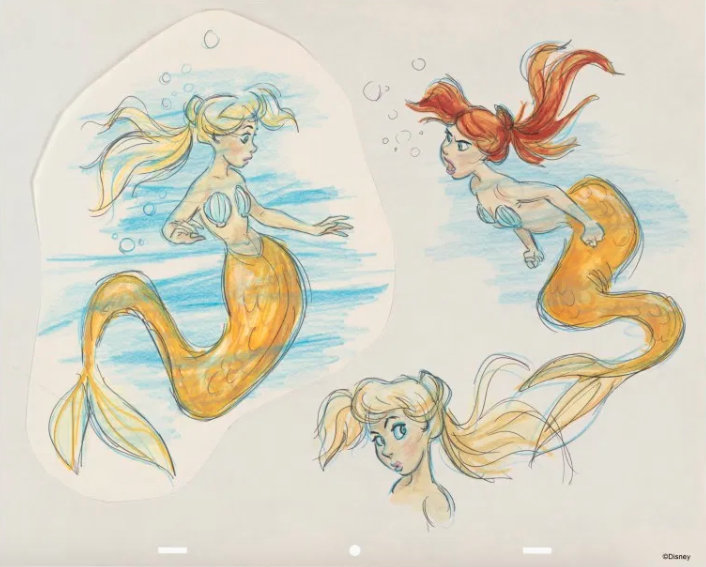
When The Little Mermaid debuted in 1989, the film was Disney’s first true fairy tale adaptation since Sleeping Beauty in 1959 – exactly thirty years before. The film was a turning point, bringing Disney (and the art of animation) back to the forefront of pop culture. With the legendary artwork of animator Glen Keane giving life to Ariel, the film set a new visual standard for animation going forward.
Brilliantly fusing the evergreen fairy tale with a larger-than-life Broadway-style musical production (spearheaded by composer and lyricist Alan Menken and Howard Ashman), The Little Mermaid is remembered today as the studios’ modern turning point. It’s the undisputed origin of the period known as the Disney Renaissance that would go on to produce hit after hit at the box office including Aladdin, The Lion King, Beauty and the Beast, Pocahontas, and… The Snow Queen?
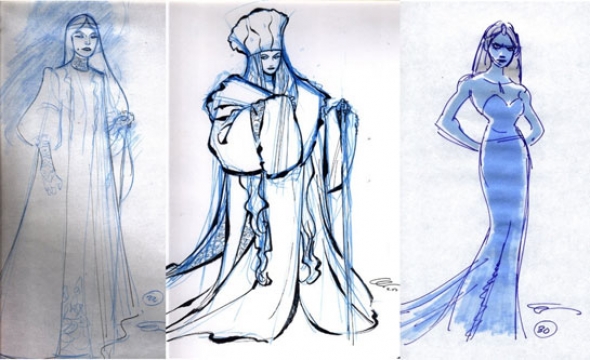
Yes, in the 1990s, Disney animators once again revived The Snow Queen, certain that this time they could use the storytelling skills they’d gained during the Renaissance to finally breathe life into the frosty character. Glen Keane (who’d worked on each Disney Renaissance film after Mermaid, too) even worked to crack the case of the Queen before famously abandoning the project in 2002 (taking up character designs for Disney’s adaptation of Rapunzel instead).
Nearly seventy years after their original attempts, it seemed that a new generation of Disney animators was finally willing to admit defeat: The Snow Queen was simply “unfilmable” – a rare designation placed on a handful of beloved literary stories considered inherently incompatible with the structure of a movie. The Snow Queen seemed to have melted at last…
… Freezing
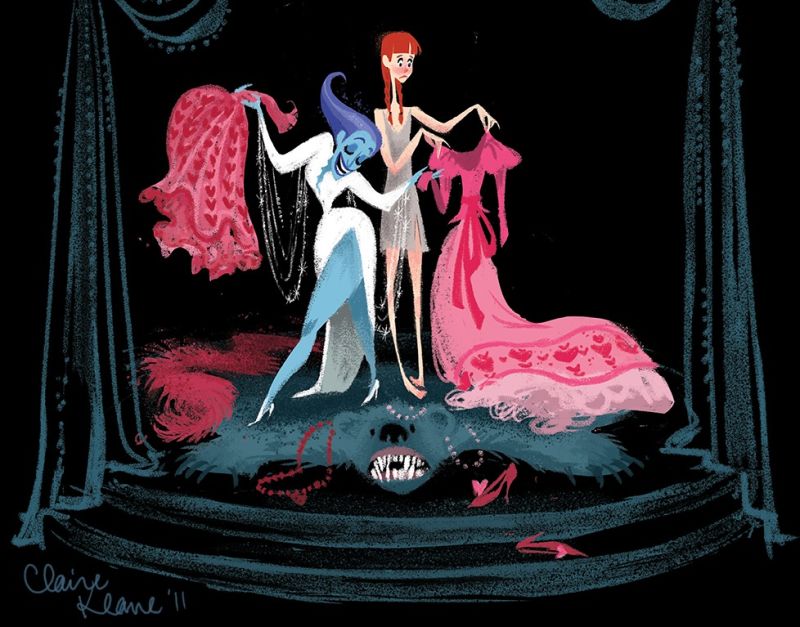
But in 2008, then-Chief Creative Officer of Disney Animation, John Lasseter, found and was apparently “blown away” by some of the art created in Disney’s Renaissance-era attempt at the story, and he saw the merit in reviving the concept with Chris Buck (director of Tarzan) at the helm.
In 2010, Anna and the Snow Queen was put into pre-production, with the team tasked with making sense of the Snow Queen story… After all that time, could it really be just that simple? Of course not. Despite early concepts interpolating Glen Keane’s blue, icy antagonist, writers still couldn’t figure out how to work the titular villain into a compelling and consequential role.
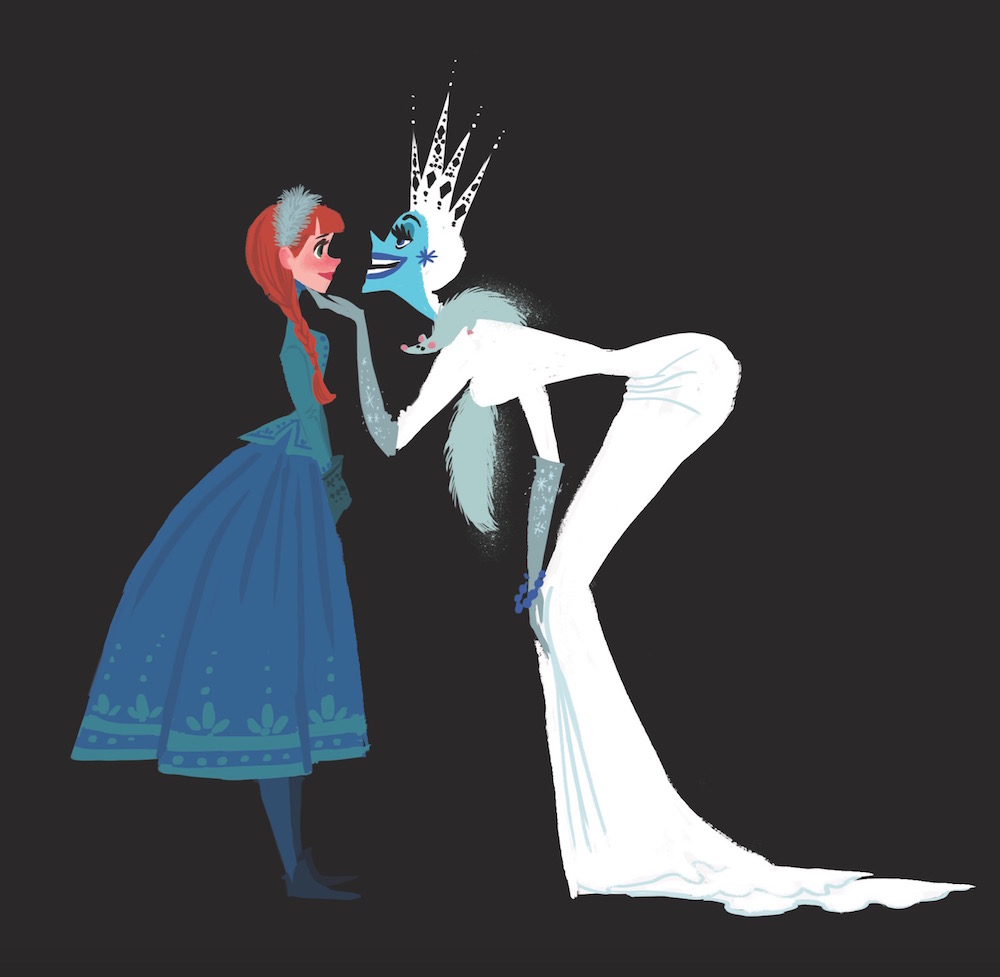
In order to make the Snow Queen work, the creative team needed to essentially invent a personality for Andersen’s aloof and vacant character. She was too one-dimensional; too distant; a lightly sketched-in barely-villain who didn’t connect to the protagonist in a personal way – and worse, didn’t drive the plot. Concept art created for the character communicates the directions that Disney was experimenting with to give the Snow Queen an identity of her own, testing a sharp, regal, curled-lip, avante garde royal, or a sassy, shapely, musically blustering bad guy. Nothing stuck.
Then, the animation team had a breakthrough. Since turning the Snow Queen into a traditional “Disney villain” wasn’t working, what if they rethought the traditional Disney formula? What if the Snow Queen wasn’t a vengeful witch, a sinister spirit, or a bad guy at all? What if she was conflicted? Misunderstood? What if she didn’t understand her powers? What if she couldn’t control them?
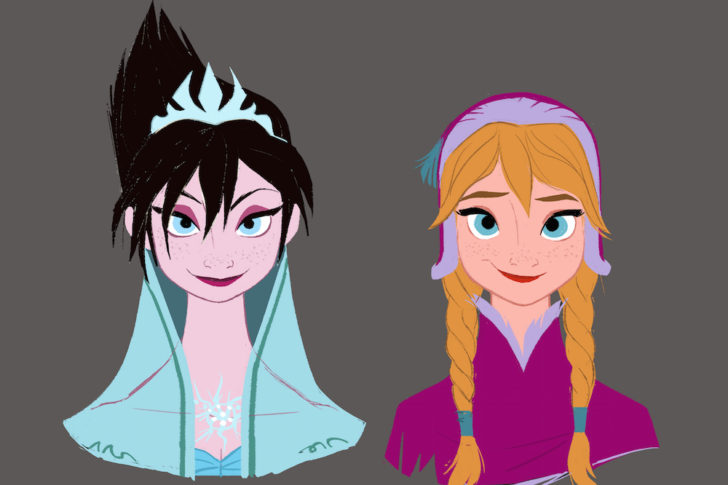
The gorgeous Art of Frozen coffee table book shows how the Snow Queen – by then, given the name Elsa – gradually lost her imposing features. Her blue skin became alabaster; her villainous, exaggerated shape was changed to that of a human, in-scale with the protagonist, Anna. Suddenly, Elsa was a yin to Anna’s yang.
Then came the true breakthrough. As we know, a hallmark of Disney Renaissance films is each protagonist’s ‘I Want’ song, explaining their inner monologue and their deepest ambition (for example, “Part of Your World,” “Belle,” “One Jump Ahead,” “Just Can’t Wait To Be King,” “Just Around the Riverbend,” “Reflection,” and “Almost There.”). Given the new, human character and her broiling internal conflict, Songwriters Kristen Anderson-Lopez and Robert Lopez crafted an “I Want” song not for Anna, but for Elsa. Yep: “Let It Go.” From then on, Elsa’s personality was set.
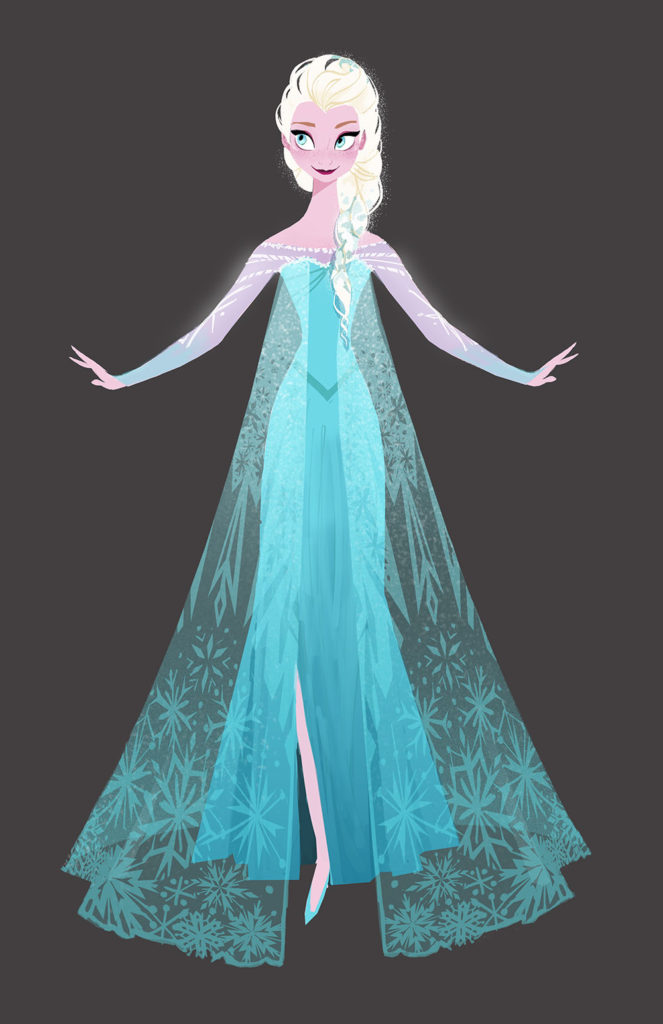
As legend has it, the last piece of the puzzle fell into place once a member of the story team asked, “What if Anna and Elsa were sisters?” With an entirely new dynamic to shape the relationship between the characters, Elsa’s call to villainy fell away entirely, and Anna’s trek toward the icy castle was now in search of her sister, deep in self-imposed isolation.
Elsa was re-animated to lose her icy crown and high-neck dress. Instead, she gained long, braided blonde hair and kind eyes. (Look familiar? Check out the Snow Queen on the last page…) She wasn’t a villain at all… she was “free” after a lifetime concealing powers she didn’t understand, haunted by the fear of accidentally hurting her own sister… And that gave Chris Buck and Jennifer Lee the chance to have “true love” save the day as never seen before.
Anna and the Snow Queen was back on the docket… with one last major change. Since Disney’s marketing team suspected that the title of The Princess and the Frog had led to its box office underperformance by excluding families with young boys, the Glen Keane Rapunzel feature in post-production was renamed Tangled (with a marketing campaign emphasizing Flynn Ryder and the film’s adventurous tone), and Anna and the Snow Queen gained a similar title (and a largely princess-free marketing campaign in the U.S.) that we know well.
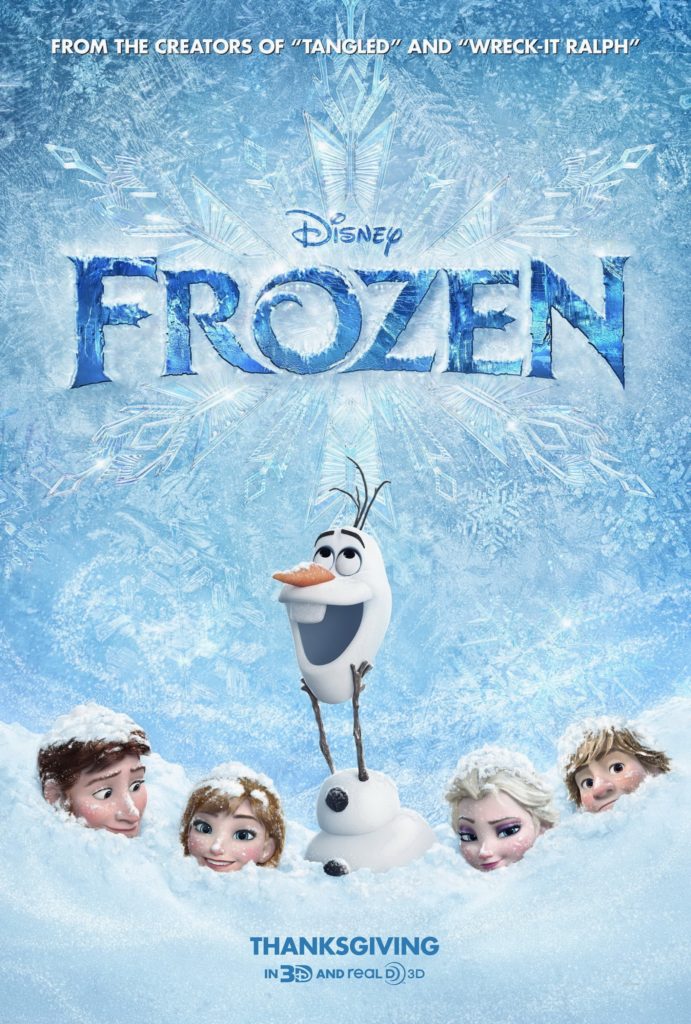
2013’s Frozen centers around the frosty relationship between two sister princesses – Anna and Elsa. Elsa maintains a chilly distance from her younger sister to protect Anna from her secret (and increasingly uncontrollable) ice powers. On the night of her coronation, Elsa’s emotions get the best of her and she ignites an eternal winter that blankets the kingdom of Arendelle in snow. Naturally, it’s up to Anna to chase her fleeing, frightened sister into the snowy mountains to convince her that she’s not better off alone.
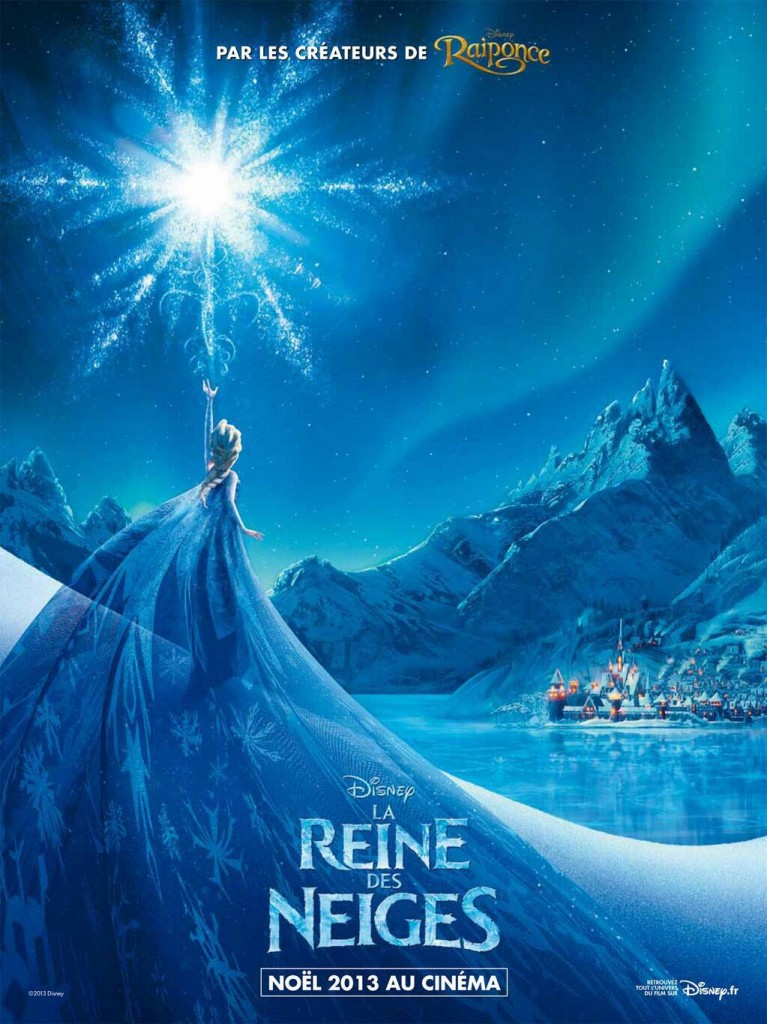
The distinctly 21st-century take gave a new twist to Hans Christian Andersen’s story of the Snow Queen at last. (And indeed, Disney fans say it’s no coincidence that the film’s leads are Hans, Kristoff, Anna, and Sven… say it three times fast.)
Though the story of Frozen is, ultimately, only loosely inspired by the Hans Christian Andersen original, it retains that title – The Snow Queen – in many international markets, with beautiful, romantic, atmospheric trailers and movie posters to boot (compared to the comical, buddy-comedy, Olaf-centered U.S. marketing).
It probably goes without saying that, $1.2 billion later, Frozen became the highest grossing animated film of all time. It also spawned 2019’s darker and more mythological Frozen II, recapturing the magic by earning the biggest box office debut for an animated film ever, then bypassing its own predecessor to claim the highest grossing animated film record for its own.
Turns out it was possible to get audiences to connect with Andersen’s “Snow Queen.” To Disney’s point, she just needed to be reimagined. Just like that, Disney’s version of the Snow Queen became the most coveted royal in the Disney Princess line. So Enchanted Snow Palace will never exist. But…
Frozen Ever After
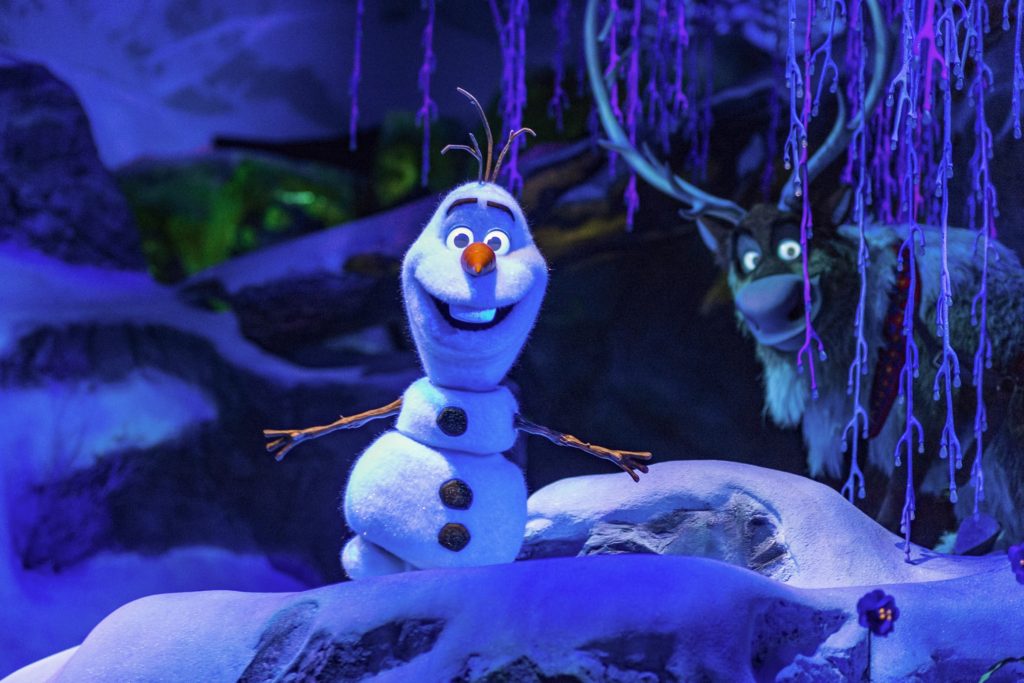
On June 21, 2016, Anna and Elsa made their way to Epcot. Replacing the Lost Legend: Maelstrom, the sisters would overtake a large portion of World Showcase’s Norway pavilion – the first major character infusion for the otherwise grounded World Showcase realm, made all the more controversial, of course, because Frozen wasn’t set in Norway, but the fictional Kingdom of Arendelle. That said, Arendelle is deeply influenced by the styles, textures, clothing, and people of Scandinavia, as was the original Danish fairy tale it drew inspiration from.
The resulting dark ride is itself a Modern Marvel: Frozen Ever After, inviting guests back to Arendelle for a “Winter Summer Day” reunion. Guests sail through frozen glades, see the film’s family of trolls, ascend the North Mountain, and splash down in the bay of Arendelle. While it might not be the musical, magical journey to the Snow Queen Marc Davis had once envisioned, it’s a star in its own right. And just as in Marc’s original concept, the highlight is a face-to-face interaction with the Snow Queen herself… blonde braid and all.
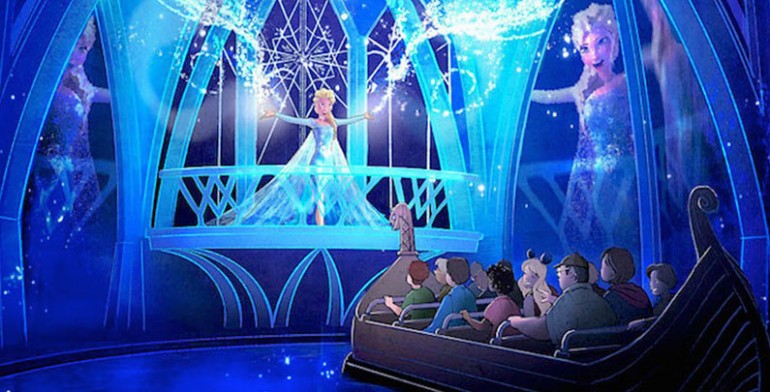
The attraction is such a favorite, Frozen Ever After is already confirmed to be cloned in Hong Kong Disneyland’s new Arendelle-themed expansion of Fantasyland, while a third copy will be located in the Frozen-themed land coming to Walt Disney Studios Park.
In fact, one of the few complaints fans tend to have about Frozen Ever After is that the story of Elsa and Anna deserves a better ride – not just a reskin of Maelstrom – and that it should be in Fantasyland, not in Epcot… If only they knew how close that was to being reality.

Thank you so much for reading. Now, it’s your turn to join the story. If you enjoy spending time falling down the “rabbit hole” of Park Lore’s in-depth, ad-free, member-supported stories, consider becoming a Member for as little as $2 / month.
Members can unlock rare concept art in every tale, reveal attraction audio streams in select stories, gain access to over a hundred exclusive articles in our quick-read Extra Features and in-depth Special Features collections, gain exclusive podcast extras, and receive an annual member card and merch in the mail! (Plus, y’know, supporting research-based, ad-free, clickbait-free, in-depth theme park writing!)
We hope you’ve enjoyed our visit to a never-built ride found only in Possibilityland. Be sure to make the jump to our collections of in-depth rides through Lost Legends, behind-the-scenes looks at Modern Marvels, the Declassified Disaster stories Disney doesn’t want you to know, and of course, never-built Possibilitylands to explore…


